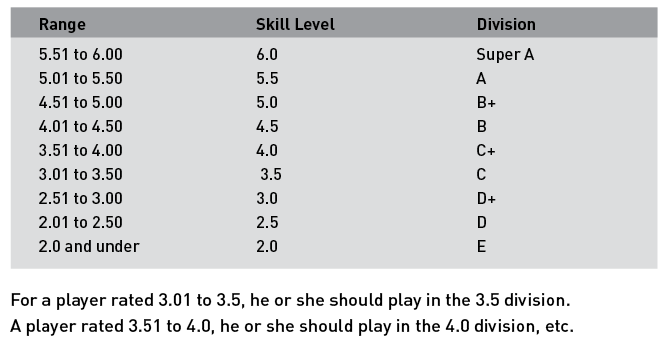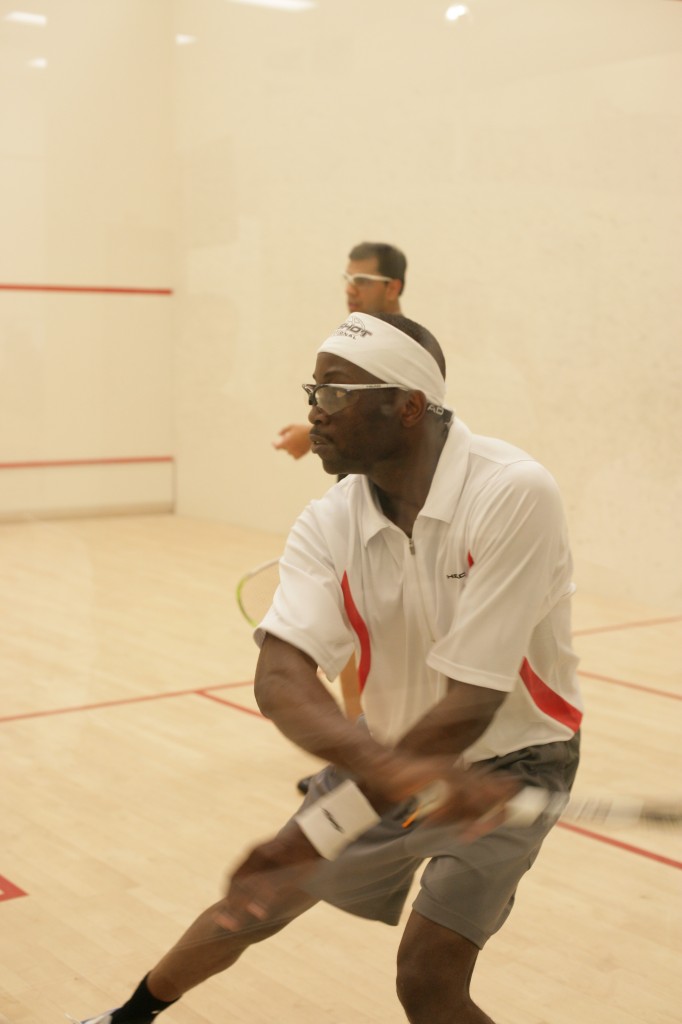
 Going Online
Going Online
Since the conversion to an online system in 2004, U.S. SQUASH has been focused on improving the accuracy of the Adult ratings and rankings. The Junior ratings and rankings had initially received more attention than the Adults due to the large quantity of data and large tournament playing base. When the rating structure was converted to an online, more dynamic system, there were still many gaps for Adults. All of the playing data in the system was from tournaments, which means there was not much data. There were also limitations in the system, such as if a player did not have an assigned rating, there was no rating exchange with a player who did, reducing the opportunities to increase the accuracy of the system. Finally, since some ratings were way off, either too high, or too low, the inaccuracies persisted, and in fact got worse in some cases. A player who was initially “over-rated” skewed every other players’ ratings in the calculation since it was inherently an inaccurate predictor of the outcome of the match.
System Updates
In 2006, to compensate for the fact that so many players were unrated still, and to correct the inaccuracies inherited from the conversion of all the old playing data, U.S. SQUASH eliminated the “verifier” system and implemented a method to create an “initial” rating for all players who played in a league or tournament. Women’s ratings were also equalized with men’s, so a half point no longer separated players of the same level—the logic being, a skill level rating is the evaluation of a player’s ability, whether male or female, adult or junior.
The system today retroactively creates an initial rating for a player after he or she has a win and a loss. Until this occurs, ratings appear with an asterisk, showing it is only “provisional”. With this change, the number of rated and ranked players has dramatically increased. It has also allowed us to push out all the “old” data that had previously been skewing the ratings for everyone. The Association also started to incorporate league matches in the rating algorithm, increasing the amount of data ratings are based on and further improving accuracy.
 Improvements Bring New Challenges
Improvements Bring New Challenges
These changes of course have caused some other challenges. Now that the ratings have stabilized, players may think of themselves as a player of a certain level, but have a rating that is, let’s say, lower. Also, U.S. SQUASH acknowledges it has done a poor job at best in promoting exactly what the ratings mean, and the implications of the skill level ranges. You may be asking simply, “If I’m rated, does this mean I’m ranked and what’s the difference anyway?” A rating is an evaluation of the player’s ability. A ranking is the display of the player’s rating with certain parameters, usually in combination, such as time (one season), gender and/or age, or SKILL LEVEL.
Digging a Little Deeper
So where does this leave us now? Let’s look at Jay Prince, publisher of this magazine, who’s rated 4.59. What?!? But he considers himself at least a 5.0, if not 5.5, certainly an “A” player. The guy has an ego for sure! After all, he has done well in the 5.5 Nationals over the years. Exactly, many people now feel “under-rated” since the system has increased in accuracy. Jay’s column a few issues ago finally acknowledged the rating system works, after losing in the 2nd round of the 4.5 Nationals before winning the Plate.
So I’m rated a 4.59, I still don’t know what division to play in!
Since the numbered rating system has been in place, the following has been applied to determine which Skill Level Division a player should compete in: To play in the 3.5 Division, as an example, a player had to be rated between a 3.26 and 3.75. Of course, if the player is rated less than 3.26, he or she could “play up,” but if rated 3.76 or above, the player must play in the next division up, the 4.0 Division. Players rated 3.76 to 4.25 play in the 4.0 Division and so on.
 However, in analyzing our data, what we have found is that, as the rating system has become more accurate (and player ratings have declined, or “deflated” in general), players are playing in divisions generally higher than the prescribed ranges would suggest. For example, in the Men’s 4.5 Division, the average rating for a player playing in this division is 3.73, the minimum prescribed is 4.26, or a differential of -0.53. We found this to be the case in nearly every single division, men and women.
However, in analyzing our data, what we have found is that, as the rating system has become more accurate (and player ratings have declined, or “deflated” in general), players are playing in divisions generally higher than the prescribed ranges would suggest. For example, in the Men’s 4.5 Division, the average rating for a player playing in this division is 3.73, the minimum prescribed is 4.26, or a differential of -0.53. We found this to be the case in nearly every single division, men and women.
As a result, for the 2009-2010 Season, U.S. SQUASH is shifting the scale used to determine a rating division for a player as follows:
For a player rated 3.01 to 3.5, he or she should play in the 3.5 division.
A player rated 3.51 to 4.0, he or she should play in the 4.0 division, etc.
For both men and women, the differential between the minimum rating required to play in the division is less with the new structure proposed than the current one. In the example of the Men’s 4.5 Division, the new minimum prescribed would be 4.01, or a differential of -0.27, about half what it currently is, meaning the player is at least in the right ballpark for the rating division he or she is choosing.
In making the change, we are adjusting the ranges to suit what most players are actually doing already in selecting divisions for tournaments, and it’s also far easier to explain to the general public, rather than using .25 and .76 as cutoffs. This simple shift will provide a simpler method to determine which division to play, and one that more accurately reflects current practices. This, combined with marketing the Letter division names (A, B, C, etc.) again should make the system more understandable and appealing for everyone.





